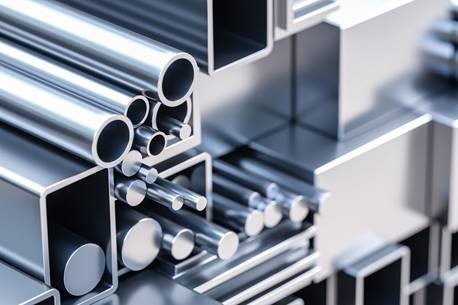
The Remarkable Evolution of Aluminium
From precious metal to everyday material.
Since its discovery at the beginning of the 19th century, aluminium has progressed significantly. Aluminium was once seen as a precious metal due to its scarcity and complex extraction procedure, but it is today a material that is widely used in constructions and everyday items. The miraculous transformation of aluminium from a rare and expensive resource to a substance that is widely used serves as proof of human innovative thinking and technological development. The following piece will look at the history, features, and current uses of aluminium while demonstrating how it evolved from a luxurious material to a necessary element of contemporary life.
The historical significance of aluminium
Also known as alumina, the most widely used element, aluminum is used in everything from soda cans to airplanes. This eco-friendly substance is incredibly adaptable and can be recycled endlessly without losing any of its qualities, making it simple to include into anything! That is fascinating, no? More than 75% of all aluminum ever produced is still in use today! It was first utilized as jewelry after being discovered in 1825, and it was once presented at the Paris Exhibition in 1867 (creating a sensation).
In the 1800s, aluminium was valued higher than gold or silver and was regarded as a precious metal! This was a result of how uncommon and challenging to extract it was. Additionally, it is incredibly strong, which is why the transportation sector uses it. Did you know that Napoleon III, the Emperor of France, used aluminum forks and plates to feed his guests? This was a clear demonstration of the preciousness and exclusivity associated with aluminium at the time. Due to its strength and light weight, it is a material that many businesses can use because it is simple to cast, machine, and mold. Additionally, aluminium doesn’t ignite, as it is non-sparking, minimizing fires whilst also keeping a high thermal conductivity

Image courtesy of Smartfoodpack.com
The development of extraction methods
However, this perception of aluminium drastically changed with the advent of technological advancements and scientific breakthroughs. In 1886, Charles Martin Hall and Paul Héroult independently discovered a method to extract aluminium using electrolysis. This revolutionary process, known as the Hall-Héroult process, made it commercially viable to produce aluminium on a larger scale Incorporating recycled metal as opposed to first-rate metal mined via the earth makes this more affordable. Once purified, it produces aluminum oxide (a white powder from which aluminum and be extracted). When electric current passes through the electrolytic cell, it breaks down the alumina into its components: aluminium and oxygen. The liquid aluminium settles at the bottom of the cell and is periodically tapped off, while the oxygen combines with the carbon anodes to produce carbon dioxide. The recycled carbon anodes are then replenished in the process. Over the years, further advancements in extraction methods have continued to improve the efficiency and sustainability of aluminium production. One such development is the use of renewable energy sources, such as hydroelectric power, to generate the electricity needed for the electrolysis process. This has reduced the environmental impact of aluminium extraction, making it a more sustainable option. Additionally, research has focused on optimizing the extraction process to minimize waste and maximize resource utilization. For example, methods like the Bayer process have been refined to extract valuable by-products from bauxite, such as iron, titanium, and silica, which can be used in other industries.

Image courtesy of Falalloycasting.com
The future of aluminium
Aluminium’s future is highly bright and promising. According to current study, experts are focusing on generating new alloys (metals that mix) that are stronger and lighter than the ones we use now; some of the most significant work is done by Alcoa and Novelis. Aluminium frees the imagination, and designers, creativity, and more businesses are turning to it. Designers have recently used aluminium in novel ways, such as ‘The aluminium wedding dresses by Ayse Byzanz’ or ‘Prosthetic leg from IIT Guwahati’. Often, aluminium was frequently used as a dying mordant, in medicine (including wound treatment), chemical mills, and as a fire-resistant coating on wood to protect fortresses from enemies/attackers. Some more of the main early uses of aluminium that revolutionized various industries were
- transportation
- construction
- packaging
- electrical appliances
- industrial appliances

Image courtesy of Feagle aluminium.com
Today, aluminium continues to be an indispensable component of modern infrastructures and technologies, showcasing its remarkable journey from a scarce and precious metal to an essential part of our daily lives and as technology continues to advance, it is expected that the extraction of aluminium will become even more efficient and sustainable. This ongoing evolution in extraction methods will not only benefit industries but also contribute to a more sustainable and resource-efficient future. Aluminium has undergone serious advancements – helping the planet and being the ideal material. The future of aluminium is rooted in sustainability and innovation. The industry’s commitment to increased recycling efforts, lightweight solutions for sustainable transportation, green smelting technologies, renewable energy integration, and advanced alloying techniques will ensure that aluminium remains a valuable material for years to come.
By Amelie Jackson
